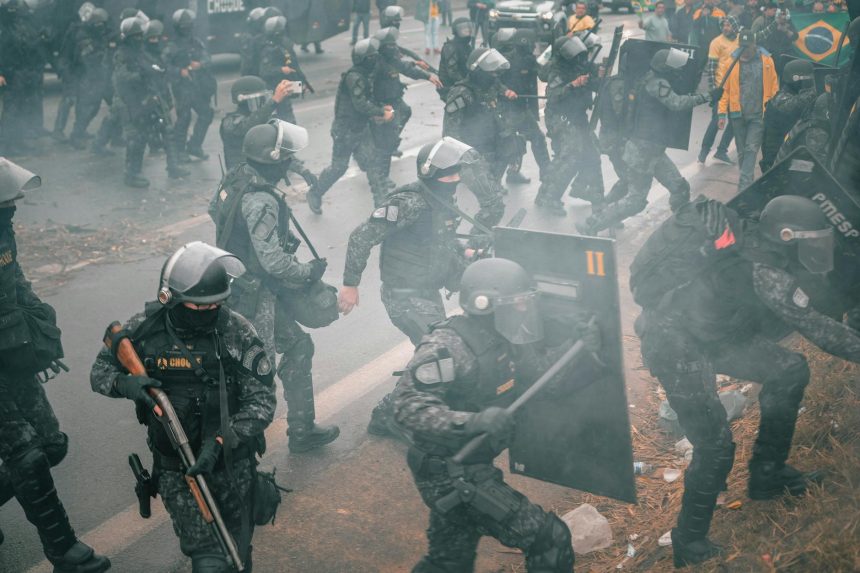us-military-drug-war
US Military Drug War: 5 Key Operations & Future Challenges
Explore the US military drug war, its controversial role, and five critical operations against cartels. Discover the strategies, impacts, and future challenges in this complex global conflict.
The fight against illicit narcotics is a global struggle, and for decades, the United States has been at its forefront. But what role does the nation’s powerful military play in this complex battle? The notion of an “armed conflict” with drug trafficking organizations has blurred lines, raising questions about military mandates, legal frameworks, and the effectiveness of deploying armed forces against criminal enterprises. This article delves into the intricate involvement of the US military drug war, examining its historical evolution, key strategies, significant operations, and the ongoing debates surrounding its impact and future trajectory.
The US Military’s Stance: Defining “Armed Conflict”
For many, the idea of military engagement against non-state criminal groups feels like a modern phenomenon. However, the U.S. military’s involvement in counter-narcotics is a long-standing, albeit evolving, commitment. Initially focused on intelligence sharing and logistical support, the lines have increasingly blurred, particularly when drug cartels operate with paramilitary precision and challenge state sovereignty. This shift has led to discussions about whether these operations constitute an “armed conflict,” a term typically reserved for engagements between states or recognized non-state actors.
Historical Context: From Interdiction to Direct Engagement
The roots of military involvement in anti-drug efforts trace back decades, primarily to interdiction missions aimed at disrupting the flow of narcotics into the U.S. From the Caribbean to the Pacific, naval and air assets have been deployed to detect and deter smuggling. Over time, as drug trafficking organizations grew in sophistication and violence, the scope expanded. Training foreign forces, providing advanced surveillance, and even direct action in specific scenarios became part of the broader strategy to combat the global drug trade.
Legal Frameworks and Operational Mandates
Operating within strict legal boundaries, the U.S. military’s participation in counter-narcotics is governed by specific authorities. These mandates often differentiate between traditional law enforcement roles, which are typically handled by agencies like the DEA, and military operations focused on national security threats. The Posse Comitatus Act generally limits the use of federal military personnel for domestic law enforcement purposes, pushing military efforts overseas or to specific border protection roles. Understanding these frameworks is crucial to grasping the constraints and capabilities of the US military drug war.
Key Strategies in the US Military Drug War
The strategies employed by the U.S. military in its fight against narcotics are multifaceted, adapting to the ever-changing tactics of drug cartels. These approaches combine high-tech surveillance with boots-on-the-ground training, all aimed at disrupting the supply chain and degrading the operational capacity of trafficking networks.
Surveillance and Intelligence Gathering
At the core of any effective counter-narcotics operation is superior intelligence. The military utilizes advanced aerial reconnaissance, satellite imagery, and signals intelligence to track drug movements, identify key players, and map out trafficking routes. This information is critical for planning interdiction efforts and informing partner nations. Sharing this intelligence with international law enforcement agencies enhances global efforts to dismantle illicit networks.
Interdiction Efforts: Air, Land, and Sea
Perhaps the most visible aspect of the military’s role is its direct involvement in interdiction. This includes:
- Naval Operations: Deploying Coast Guard assets (often integrated with Navy support) and naval vessels to patrol vast maritime corridors, intercepting drug-laden vessels in international waters.
- Air Interdiction: Using radar and fighter jets to track and, if authorized, force down aircraft suspected of smuggling narcotics.
- Border Security: Providing aerial surveillance, ground support, and infrastructure assistance to Customs and Border Protection along U.S. borders.
Capacity Building and Training Foreign Forces
A significant portion of the military’s counter-narcotics strategy involves strengthening the capabilities of partner nations. This includes training foreign military and law enforcement personnel in tactics, intelligence analysis, and operational planning. The goal is to empower these countries to tackle drug trafficking within their own borders more effectively, fostering long-term stability and reducing the need for direct U.S. intervention. For more insights into international counter-narcotics efforts, visit the U.S. Department of State’s Bureau of International Narcotics and Law Enforcement Affairs.
Direct Action and Targeted Operations
In specific instances, particularly when drug trafficking organizations pose a direct threat to U.S. interests or personnel, military units may engage in targeted operations. These can involve special forces conducting raids, providing security for sensitive missions, or assisting in the capture of high-value targets. Such actions are highly sensitive and typically undertaken with significant legal and political oversight, highlighting the complex nature of the US military drug war.
The Impact and Controversies of Military Involvement
While military involvement in counter-narcotics aims to disrupt the global drug trade, its efficacy and ethical implications are subject to continuous debate. The results are often mixed, and the consequences can be far-reaching.
Successes and Challenges in Disrupting Drug Networks
Military operations have undeniably led to significant seizures of narcotics and the apprehension of key figures. They have also helped to degrade the infrastructure of some trafficking organizations, forcing them to adapt and incurring higher operational costs. However, the “balloon effect,” where disruption in one area merely pushes operations to another, remains a persistent challenge. The sheer adaptability and financial power of cartels mean that gains can often be temporary without sustained, comprehensive strategies. For statistics and reports on drug enforcement, refer to the Drug Enforcement Administration’s official statistics.
Ethical Dilemmas and Geopolitical Ramifications
The deployment of military forces in what is fundamentally a law enforcement problem raises several ethical questions. Concerns about civilian casualties, human rights abuses by partner forces, and the militarization of foreign policy are frequently voiced. Geopolitically, military presence can be viewed as interventionist, potentially destabilizing regions or fueling anti-American sentiment, even when the intent is to assist.
The Debate Over Mission Creep
Critics often point to “mission creep,” arguing that military involvement can expand beyond its initial scope, drawing forces into prolonged conflicts or domestic law enforcement roles for which they are not ideally suited. Balancing national security interests with the distinct role of civilian law enforcement is a constant tension in the ongoing discussion about the military’s proper place in the drug war.
Looking Ahead: The Future of the US Military Drug War
The landscape of drug trafficking is constantly evolving, driven by new technologies, shifting demographics, and geopolitical changes. The military’s approach must adapt accordingly.
Adapting to New Threats and Technologies
Future efforts will likely focus on countering emerging threats, such as the rise of synthetic opioids like fentanyl, and leveraging cutting-edge technologies. This includes advanced data analytics to predict trafficking patterns, drone technology for surveillance, and international cooperation to combat cyber-enabled drug sales. The ability to innovate and stay ahead of criminal organizations will be paramount.
Balancing Security and Diplomacy
The future of the US military drug war will increasingly emphasize a holistic approach that integrates security measures with diplomatic initiatives, economic development, and public health strategies. Military action alone cannot solve the complex issue of drug trafficking. A balanced strategy that addresses both supply and demand, and supports sustainable alternatives for communities impacted by the drug trade, is essential for long-term success.
Conclusion: Assessing the Efficacy of Military Anti-Drug Operations
The U.S. military’s role in counter-narcotics is a testament to the enduring challenge posed by drug trafficking organizations. From sophisticated intelligence gathering and global interdiction efforts to training partner forces and, at times, direct action, the military contributes significantly to disrupting the illicit drug trade. However, this involvement is not without its complexities, successes, and controversies. Ultimately, the effectiveness of the US military drug war hinges on a carefully calibrated approach that respects legal boundaries, fosters international cooperation, and integrates military action within a broader strategy of law enforcement, diplomacy, and societal development. As the nature of drug trafficking continues to evolve, so too must the strategies employed to combat it, ensuring that military resources are deployed judiciously and for maximum impact.
What are your thoughts on the military’s role in combating drug trafficking? Share your perspective in the comments below.
The U.S. military plays a complex role in the global drug war, engaging in intelligence, interdiction, and capacity building. Explore its strategies, impact, and future challenges.
Military counter-narcotics operations, US military anti-drug efforts, drug trafficking organizations, cartel disruption, global drug trade, counter-narcotics strategies
Featured image provided by Pexels — photo by Joel Santos







